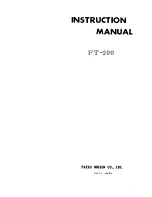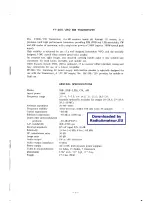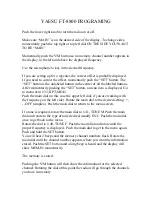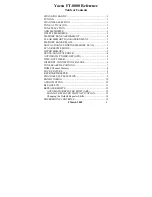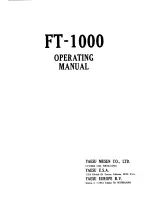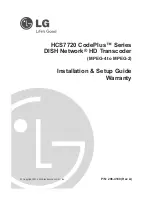
Model DT333-0700
4-Wire mV/TC Dual Transmitter w/USB
Acromag, Inc. Tel: 248-295-0880
- 21 -
http://www.acromag.com
- 21 -
https://www.acromag.com
Configuration
…
HELP
–
You can press
[F1]
for Help on a selected or
highlighted field or control. You can also click the
[?]
button in the upper-right hand corner of the screen
and click to point to a field or control to get a Help
message pertaining to the item you pointed to.
If the scaled input/output zero and full-scale points
are chosen too close together, performance will be
degraded.
Select the Break Direction for the Channel
…
If a T/C lead wire connected to the channel breaks or its
connection opens, you can select the direction to send the output
signal and input reading: upscale or downscale to signal the fault.
Note that selecting a reverse-acting output will flip the output
break detent (but not the input reading `detent).
Turn CJC (Cold Junction Compensation) On or Off at the Channel
…
There are two very accurate temperature sensors mounted inside
in the plastic of the terminal sockets of the input terminals at TB1
and TB3 used to cold-junction compensate connected
thermocouple signal wires. Because the voltage measured across
the T/C is relative to the difference in temperature between each
end, CJC is used to extract the temperature of the remote end by
monitoring the temperature at the input terminals, usually
referred to as the Cold Junction of the T/C.
Select the Current or Voltage Output Range for the Channel
…
This unit has separate DC voltage and DC current output terminals
at each output channel which share a channel return, but only one
signal may be loaded at a time. Active (Sourcing) Current Output
Ranges are 0-20mA, 4-20mA, and Disabled, and the current
output will drive up to 525Ω.
Sourcing Voltage Output Ranges are
±10V, ±5V, 0-10V, 0-5V, and Disabled, and the voltage output may
drive
1KΩ or higher loads.
Only one output signal of the channel,
current or voltage may be loaded at one time.
Select the I/O Scaling for the Channel
…
You may rescale the nominal input range to a smaller sub-range to
drive its output, and you may choose to rescale a nominal output
range. Be careful not to reduce an I/O range too much, as
resolution diminishes in proportion and noise/error magnifies
(each halving of range reduces respective resolution by 1 bit). To
achieve rated performance, maintain an effective I/O resolution of
12-bits or better when scaling I/O ranges.
In the Input/Output scaling fields for each endpoint, set the input
signal minimum/zero value and maximum/full-scale value inside
the nominal range to correspond to the output range zero/full-
scale value inside the nominal output range. You could optionally
swap input zero/full-scale levels to configure a reverse acting
output response if desired. Note that some under and over-range
is built into every I/O range and these limits vary.
Set Input Units for Display & the Output Will be Linearized to
…
This model supports T/C inputs in your choice of degrees Celsius
or Fahrenheit (millivolt inputs use millivolts).
Once you have made your configuration selections, click the
[Send
I/O Config]
button to write them to the module. You can read the
Status of your sent message to the unit in the “Status” field.
Alternately, you could click
“
F
ile”
in the upper left corner to save
the settings to a file on your PC, for later reference.































